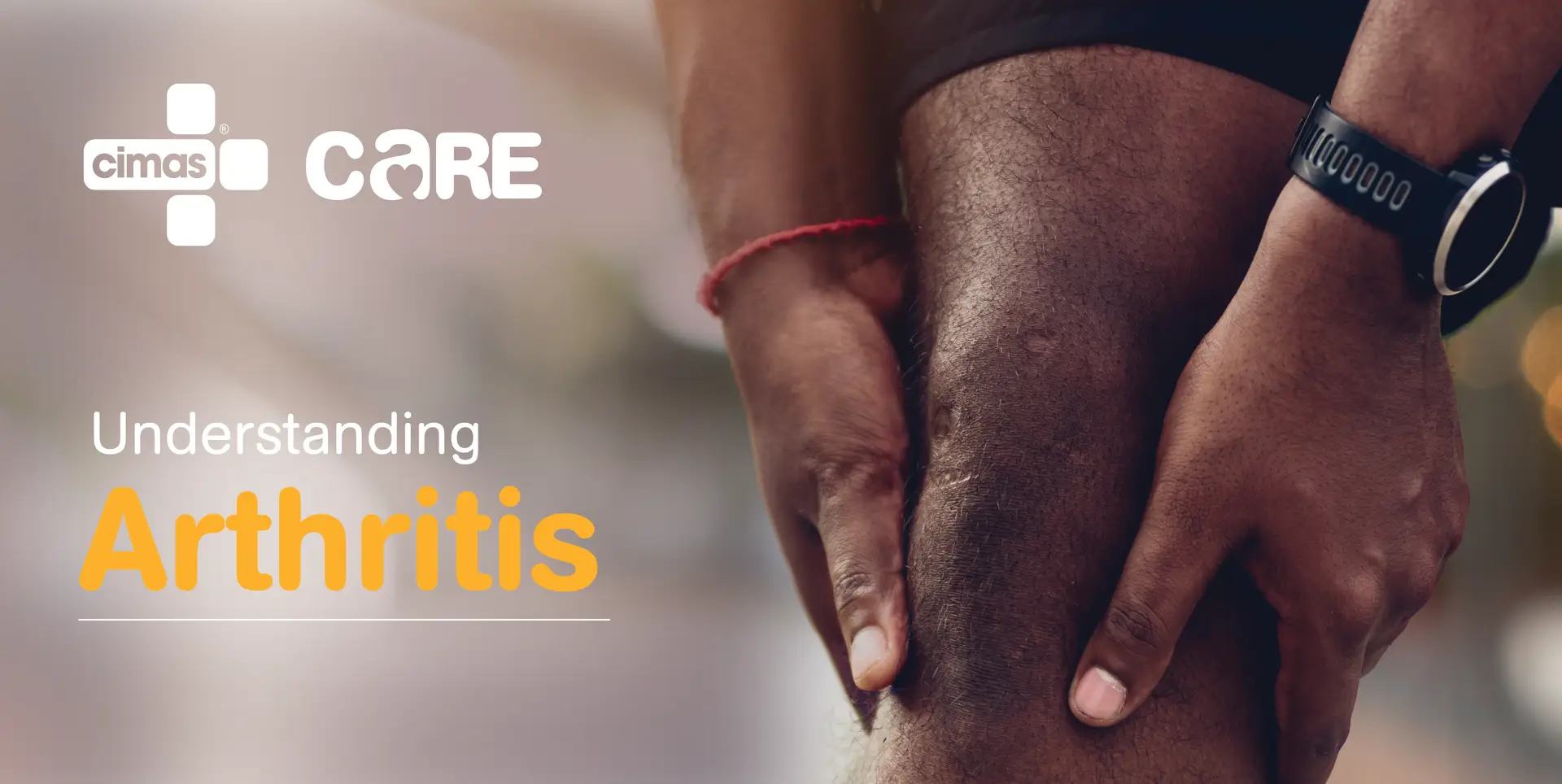
Understanding Arthritis
Arthritis is a broad term used to describe a group of conditions that cause inflammation, swelling, and pain in the joints and surrounding tissues.
It can affect one or multiple joints and may lead to stiffness, decreased range of motion, and long-term joint damage. The most common types are osteoarthritis (OA) and rheumatoid arthritis (RA).

Causes of Arthritis
The causes of arthritis depend on the type, but common causes include:
- Wear and tear of cartilage (Osteoarthritis)
- Autoimmune disorders (Rheumatoid arthritis, Lupus)
- Infections (e.g., septic arthritis)
- Metabolic disorders (e.g., gout)
- Genetic predisposition
- Trauma or joint injury

Predisposing Factors
Factors that increase the risk of developing arthritis include:
1. Age (risk increases with age)
2. Gender (RA is more common in women, gout in men)
3. Genetics and family history
4. Obesity (increases joint stress)
5. Joint injuries
6. Repetitive movements or overuse
7. Smoking (especially in RA)
8. Poor diet and lack of physical activity

Signs and Symptoms
1. Joint pain and stiffness
2. Swelling in and around the joints
3. Reduced range of motion
4. Warmth or redness around the joint
5. Fatigue (especially in RA)
6. Joint deformity (in severe cases)
7. Morning stiffness lasting more than 30 minutes (common in RA)

Prevalence by Age
- Osteoarthritis typically affects people over 50 years old.
- Rheumatoid arthritis commonly develops between ages 30 and 60, but can occur at any age.
- Juvenile arthritis can occur in children under 16.
- Risk and prevalence of most types of arthritis increase with age.

Prevalence by Age
1. Chronic pain – Persistent joint pain can reduce quality of life.
2. Joint deformity – Particularly in rheumatoid arthritis and advanced osteoarthritis.
3. Loss of joint function – Reduced mobility and flexibility can lead to disability.
4. Muscle weakness and atrophy – Due to decreased use of affected joints.
5. Reduced ability to perform daily activities – Impacting independence and employment.
6. Depression and anxiety – Common in people with chronic pain and limited mobility.
7. Sleep disturbances – Due to pain and discomfort.
8. Increased risk of falls – Especially in elderly patients with joint instability or weakness.
9. Osteoporosis – Can occur due to inflammation, corticosteroid use, or inactivity.
10. Cardiovascular disease – Especially linked with inflammatory types like RA due to systemic inflammation.
11. Lung complications – In RA, can include pulmonary fibrosis or pleuritis.
12. Eye problems – Such as dry eyes, scleritis, or uveitis, particularly in autoimmune arthritis.
13. Kidney damage – Especially in lupus-related arthritis or long-term NSAID use.
14. Skin changes – Rashes or nodules (e.g., rheumatoid nodules, lupus rash).
15. Gastrointestinal issues – From medications like NSAIDs.
Follow for more tips and information on managing Autism and any other chronic illnesses
Email us on: cimascare@cimas.co.zw





